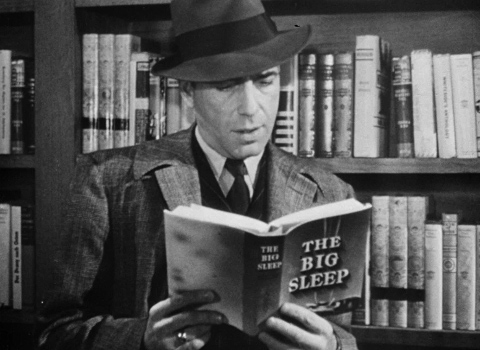It’s once again time to cast our gaze back to one of the greats of yesteryear. Today I’ll be looking at one of the fathers of the Hardboiled Detective sub-genre: Raymond Chandler (along with one
It’s once again time to cast our gaze back to one of the greats of yesteryear. Today I’ll be looking at one of the fathers of the Hardboiled Detective sub-genre: Raymond Chandler (along with one of his foundational works).
But first, some background.
Carroll John Daly pioneered the Hardboiled genre in late 1922 with his story The False Burton Combs. The style steadily grew in popularity, reaching its height during the 30’s-50’s. In addition to Daly and Chandler, Dashiell Hammett and James M. Cain did a lot of the heavy lifting to push this little Pulp genre into the mainstream.
Now, on to the actual story.
Published in 1939, The Big Sleep marks Chandler’s first novel. He created the full length story by, as he put it, “cannibalizing” short stories he had written for Black Mask. This particular novel draws most heavily from his works Killer in the Rain (1935) and The Curtain (1936), though neither story was originally connected.
The Big Sleep introduces us to Philip Marlowe, a world-weary, working-class private detective. He knows how to handle himself around both his millionaire client and the local toughs. And especially where the two overlap. He’s determined to follow his case wherever it leads, but wise enough to know when to keep his mouth shut.
Without giving too much away (this is a mystery story after all): Marlowe finds himself digging into the seedier side of Los Angeles investigating a blackmail claim. But things only get more complicated from there as he is faced with deceit, corruption, and gun-play.
But the plot isn’t the main focus of The Big Sleep. Like many Hardboiled Detective stories, it’s about the character and the atmosphere. Marlowe’s personal code pushes him into trouble as much as the actual case and in the end…well, you’ll just have to read it to find out.
Similarly, the city of Los Angeles itself is a kind of character throughout the story, represented by crooks and cops, hustlers and ex-bootleggers, stiffs and dames. And in this particular story, rain. Lots and lots of rain. All these things work together to create a dour mood for the city (and Marlowe along with it). As the detective himself says: “Me, I was part of the nastiness now.”
The Big Sleep is a complex story with plenty of twists and turns, but the focus is always on Marlowe as he pieces the clues together. While some elements haven’t aged well (see how gracefully you’ve aged after eighty years), others are still so poignant as to be a little uncomfortable.
It may not be the most celebrated or well-known of Chandler’s works, but The Big Sleep is definitely worth a read, whether you’re already a fan of Hardboiled Detective stories or if you’re just checking them out for the first time.
